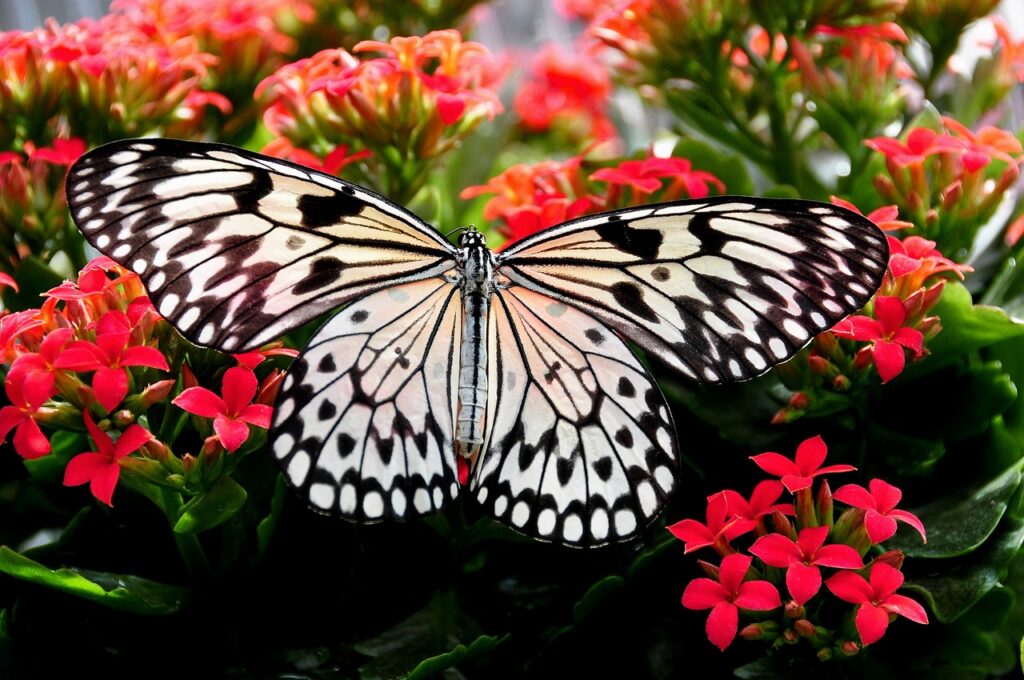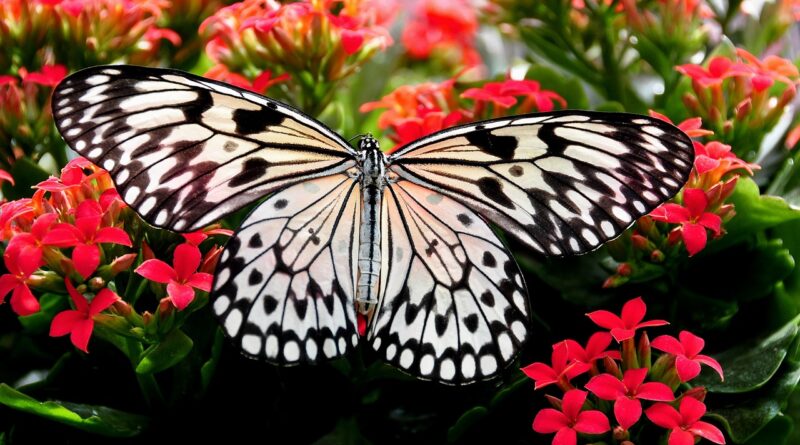Creating A Butterfly Garden: Attracting Beautiful Pollinators
If you’re looking to add a touch of beauty and life to your garden, creating a butterfly garden is the perfect choice. Not only will it attract these beautiful pollinators, but it will also help in the conservation of their species.
Butterflies play a crucial role in the pollination of plants, and by creating a garden that they love, you’re not only helping them, but you’re also benefitting the environment as a whole.
To create a successful butterfly garden, you’ll need to learn about the specific plants that attract these beautiful creatures, understand their needs, and provide them with a suitable environment. With the right combination of plants and some simple additions, such as water sources and shelter, you can create a haven for butterflies in your backyard.
In this article, we’ll guide you through the process of creating a butterfly garden that will attract these stunning creatures and bring your garden to life.
Understanding the Importance of Butterfly Gardens for Pollination
Butterfly gardens aren’t just pretty to look at – they play a crucial role in pollination by attracting beautiful pollinators like butterflies.
These gardens are important because they help support butterfly migration and provide a habitat for butterflies to lay their eggs. Without butterfly gardens, these beautiful creatures may not have a place to live and thrive.
One of the key benefits of planting milkweed in a butterfly garden is that it’s the only plant that monarch butterfly caterpillars can eat. By planting milkweed, you’re providing a crucial food source for monarchs during their migration.
Additionally, milkweed flowers are an excellent nectar source for many other butterfly species. By creating a butterfly garden with milkweed, you’re not only supporting monarch butterflies, but also many other beautiful pollinators.
Choosing the Right Plants to Attract Butterflies
To lure in these winged visitors, you’ll want to select plants that offer a variety of nectar sources and host plants for caterpillars. When it comes to plant selection, it’s important to consider the pollinator preferences in your area.
Different types of butterflies are attracted to different plants, so it’s important to do your research and choose plants that will attract the specific species you want to see in your garden.
Some popular choices for butterfly gardens include milkweed, which is a host plant for monarch butterflies, as well as asters, coneflowers, and butterfly bushes, which provide nectar for a variety of butterfly species.
It’s also important to choose plants that bloom at different times throughout the growing season, so that there is always a source of nectar available for the butterflies.
By selecting the right plants for your butterfly garden, you can create a beautiful and inviting space that will attract these important pollinators.
Providing Water Sources for Butterflies
You can easily provide water sources for these delightful creatures by setting out shallow dishes filled with water and a few pebbles. This is known as butterfly puddling, and it’s a great way to attract butterflies to your garden.
Butterflies need water to survive, and by providing them with a shallow dish of water, you can help them to stay hydrated and healthy. If you want to get creative, you can also create your own DIY water features that will attract even more butterflies to your garden.
For example, you can create a small pond or fountain that provides a constant source of water for the butterflies. You can also add rocks and plants to your water feature to create a natural habitat that will attract a variety of different butterfly species.
With a little bit of effort and creativity, you can create a beautiful and welcoming environment for these pollinators to thrive in.
Creating Shelter for Butterflies in Your Garden
By adding natural materials like sticks, leaves, and branches to your outdoor space, these delicate creatures can find a safe haven from harsh weather conditions. However, you can take it one step further by building a butterfly house.
Butterfly houses are DIY projects that provide shelter for butterflies by mimicking natural habitats. You can create one by using untreated wood, drilling holes for ventilation, and adding twigs and bark for butterflies to rest on.
Butterfly houses not only serve as shelter but also attract butterflies to your garden. You can place them near nectar sources and in areas with dappled sunlight.
By providing shelter and a safe place for butterflies to rest, not only are you helping them survive but also creating a beautiful and vibrant ecosystem in your own backyard. So why not try building a butterfly house and watch these graceful creatures thrive in your garden?
Maintaining Your Butterfly Garden for Long-Term Success
Keeping up with the care of your butterfly garden ensures its longevity and the continuous presence of these delicate creatures in your outdoor space.
One of the essential tasks in maintaining your butterfly garden is seasonal pruning. This process involves removing dead or damaged plant material, cutting back overgrown plants, and shaping bushes to allow for adequate airflow and sunlight. Pruning also encourages new growth and helps to maintain the overall health of your plants.
Pest management is also crucial in maintaining your butterfly garden. Pests such as aphids, whiteflies, and spider mites can quickly damage your plants and attract harmful predators to your garden. To prevent pest infestations, regularly inspect your plants for signs of damage and remove any affected leaves or branches.
Additionally, consider using natural pest control methods such as introducing beneficial insects like ladybugs or spraying your plants with a mixture of water and dish soap.

By taking these steps, you can ensure the long-term success of your butterfly garden and continue to enjoy the beauty of these pollinators in your outdoor space.
Frequently Asked Questions
What are some common predators of butterflies in a garden?
To protect your butterflies from predators, use gardening techniques such as planting thorny bushes around your garden or using repellents like garlic spray. Common predators include birds, spiders, and ants.
How can you tell if a butterfly is male or female?
To identify a butterfly’s gender, look at its wings. Males have a small black spot on their hind wings while females have a larger one. Mating behavior can also reveal gender. Providing butterfly nectar sources can attract both male and female butterflies to your garden.
What is the lifespan of a butterfly and how does it vary between species?
Butterfly lifespan varies between species. Generally, it lasts from a few days to a few weeks. The metamorphosis stages also differ for each species. The pupa stage can last for days or months.
Can you attract specific types of butterflies to your garden based on their preferred plants or habitats?
You can attract specific butterfly species to your garden by selecting plants that they prefer. Research which plants are native to your area and plant them to create a habitat that will lure in these beautiful pollinators.
What are some common mistakes to avoid when creating a butterfly garden?
When creating a butterfly garden, common mistakes to avoid include poor plant selection, failure to provide host plants, using pesticides, and not providing enough water. Choose plants that caterpillars eat and those that attract nectar-seeking adult butterflies.
Conclusion
Congratulations on taking the first step towards creating a beautiful butterfly garden! By understanding the importance of pollination and choosing the right plants, you can attract these stunning pollinators to your yard. Remember to provide water sources and shelter for the butterflies to ensure their long-term success in your garden.
Maintaining your butterfly garden is also key to its success. Keep an eye out for any pests or diseases that may harm your plants and take action to prevent them. Regularly pruning and deadheading your plants will also promote healthy growth and encourage more butterflies to visit.
With a little bit of effort and care, you can enjoy the beauty of these delicate creatures in your own backyard. Happy gardening!

